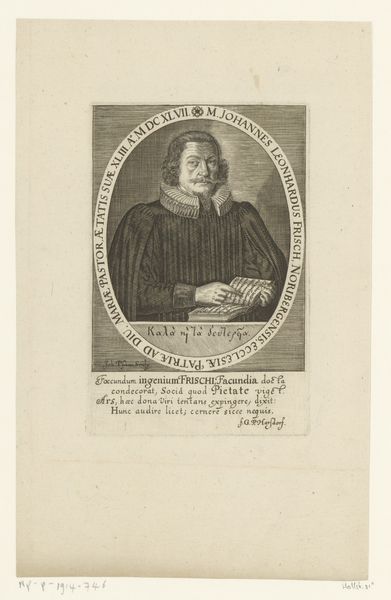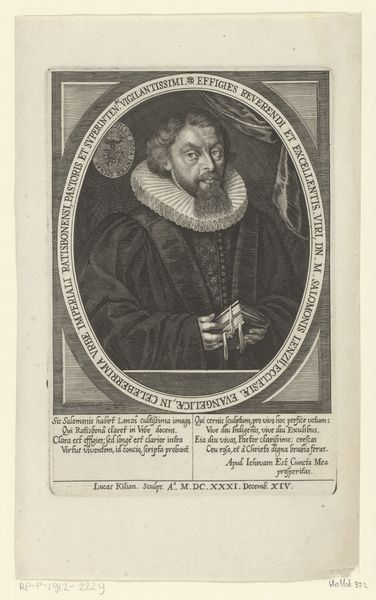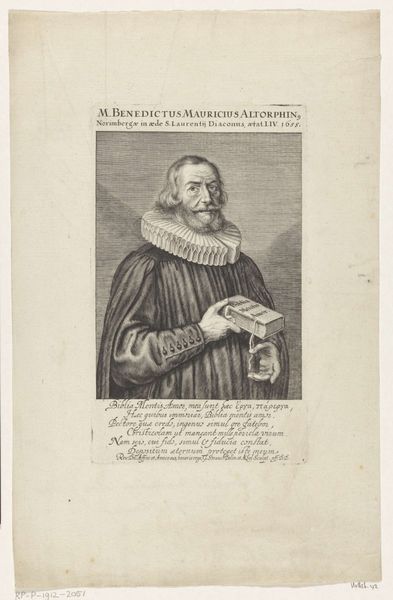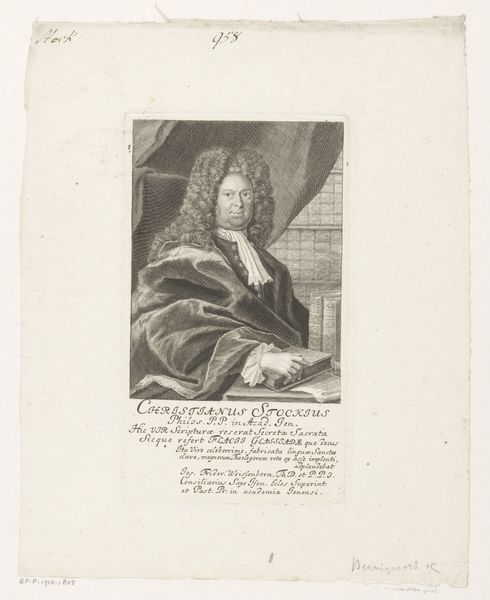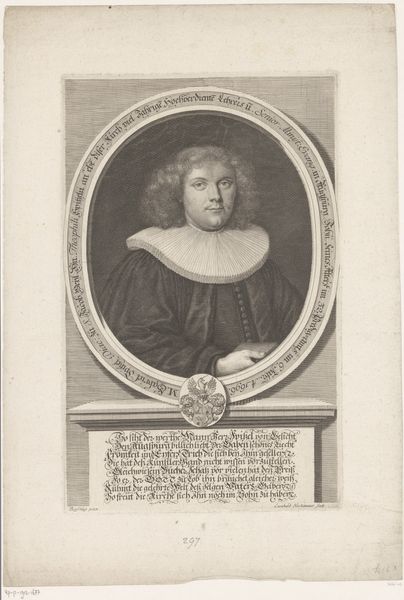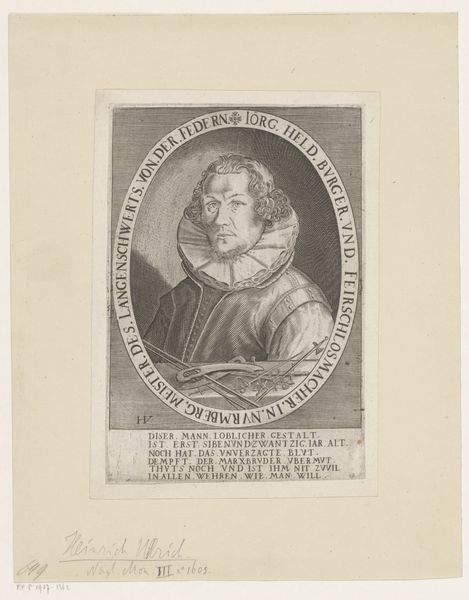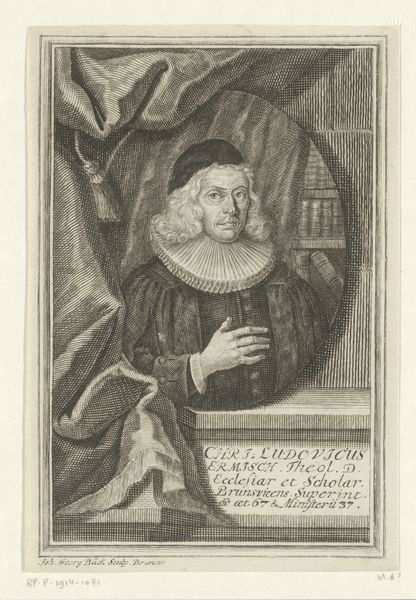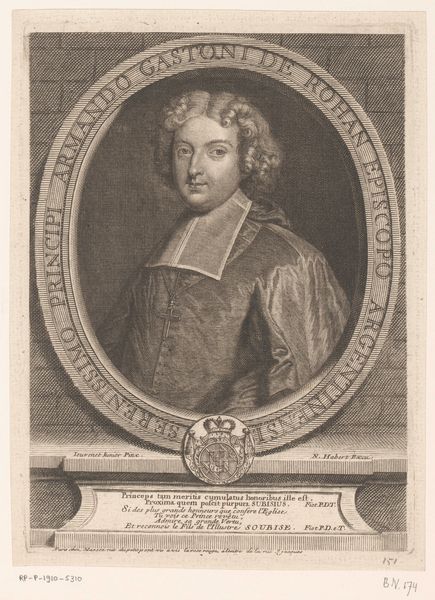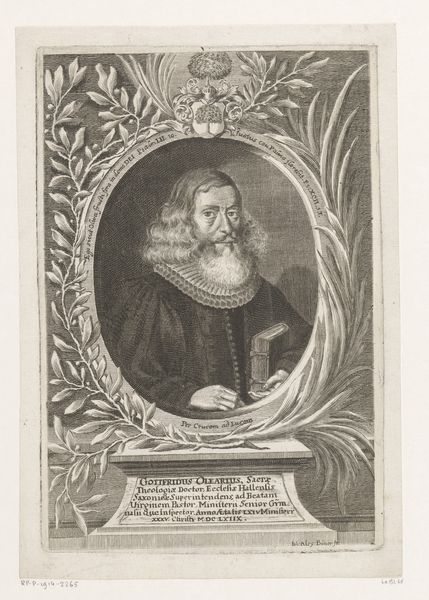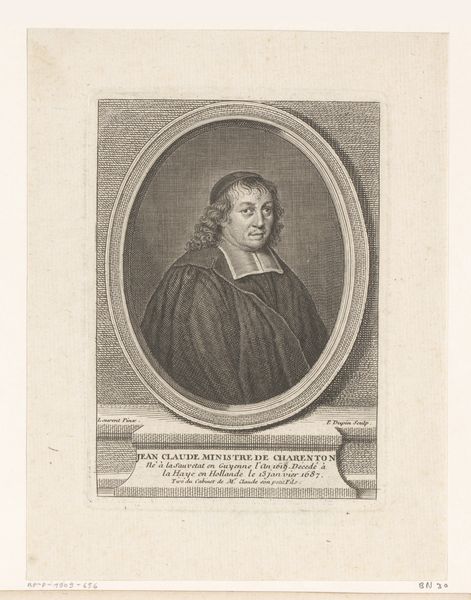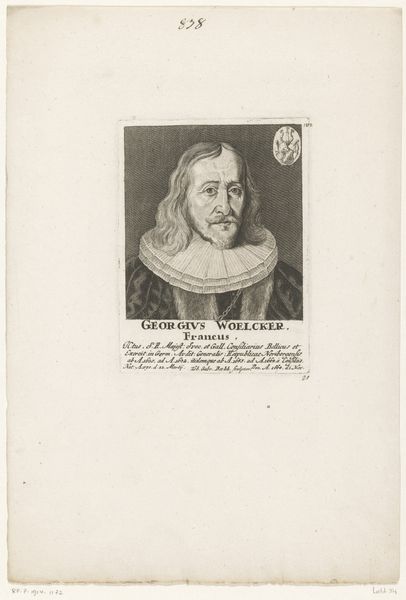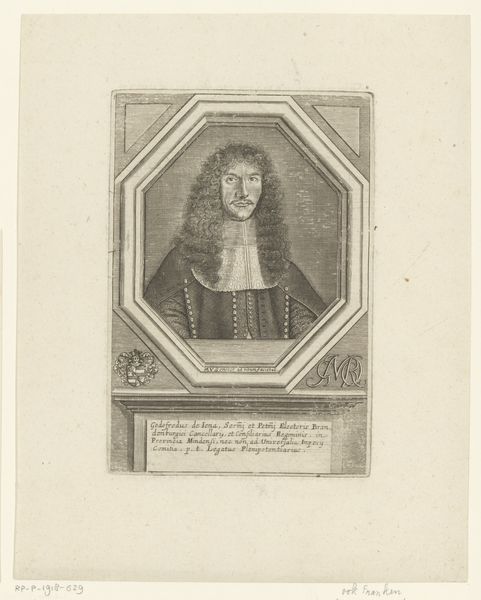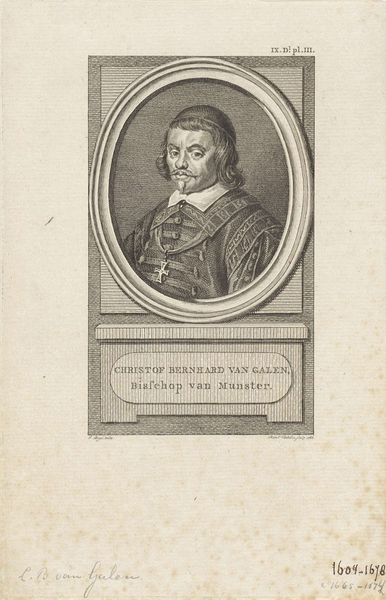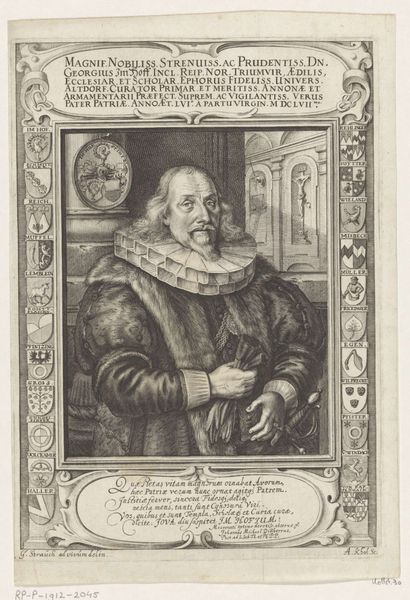
Dimensions: height 293 mm, width 205 mm
Copyright: Rijks Museum: Open Domain
Curator: Looking at this engraving, I immediately think of dignity. There's a certain weight, a gravitas, in the way this man is depicted. Editor: That’s Raimondo Faucci’s 1769 portrait of Inghiramo Inghirami, and yes, it embodies the ideals of its time. Let's dive into the world this image creates. Inghirami, portrayed here, was a significant figure – a nobleman and scholar of Volterra. What symbols or cues resonate with you? Curator: His robe, that elaborate collar – clear symbols of status and learning. And the books! They represent knowledge, but also, the weight of tradition. There's an intriguing emphasis on hands. One resting on an open book, the other lightly touching the edge of the desk. Are they signs of intellect, of holding knowledge in his hands, literally? Editor: Precisely! The pose is carefully constructed to project an image of intellectual authority. Consider the period – the 18th century, still basking in the long afterglow of the Baroque, a time when portraiture was about conveying power and pedigree. What sort of continuities might exist between images like this and the societal values? Curator: This print’s very medium speaks to that – the precision of engraving lending itself to a sense of permanence. He’s placed next to inscriptions explaining how he descended in direct line from an original painted portrait; how he is so connected to that specific Inghirami family branch through line, legacy, and inherent power. You get a sense that this isn't just about depicting a man, but embedding him into the cultural memory. Editor: That act of engraving, replicating and disseminating his image through print, speaks volumes about the intended audience and purpose. It aimed to solidify the Inghirami family’s standing and project an image of civic virtue within the broader cultural landscape. Notice the family crest, subtly placed - a visual anchor grounding his identity. Curator: And isn't it interesting how portraiture so often straddles the line between individuality and representation? It captures one person while also invoking archetypes – the scholar, the statesman. He’s both Inghiramo Inghirami and an emblem of enlightened aristocracy. Editor: The printing process allowed these symbols to multiply and circulate broadly, shaping the perceptions of Inghirami, his lineage, and the values they embodied. An important case study when we examine how historical and political forces shape cultural representations of power. Curator: This artwork holds significance, showcasing the psychology and cultural weight that such an image could convey, reminding us how symbols function to reinforce structures of power, even today. Editor: And that understanding allows us to unpack how these historical figures are packaged and presented for a viewing audience. Fascinating!
Comments
No comments
Be the first to comment and join the conversation on the ultimate creative platform.
